Math Adventures
Visit mathadventures.org!

About
Math Adventures is a weekly, hour-long after school program for 3rd-5th graders that focuses on math enrichment topics that are not typically covered in the school curriculum. Through interactive lectures, worksheets, and hands-on discovery activities, the program strives to inspire kids to realize that math is fun and interesting and has uses beyond the mechanics of addition, subtraction, multiplication, and division.
Why I started the program
I first developed a passion for math in fourth grade when I joined the Olga Radko Endowed Math Circle, where I was introduced to a variety of cool math topics I had never seen before. Since then, I've wanted to help inspire a love for math in kids by giving them the chance to discover firsthand some of the wonderful and surprising ways in which math presents itself in the world. I started Math Adventures in hopes of providing elementary school students with the opportunity to explore different areas of math at an early age and to adopt a mindset of curiosity toward math, regardless of whether or not they have any background knowledge on the subject.
Process
I began the process of making Math Adventures a reality in early November 2019. To get the program started, I first reached out to Emily Fuller, who was running Windward service programs in the fall because Ashley Goodman, the Director of Service Learning, was on maternity leave. Emily happened to mention my project to my math teacher, Mike Fox-Boyd, who mentioned it to the Math Department Chair, Mya Caruso. Mya put me in touch with her friend, a parent at Overland Elementary, who was interested in helping me start a math program for her children and their friends. After countless meetings with Emily, Mya, Mike, and Ashley (who came back from maternity leave in January), as well as many email conversations with various contacts at Overland Elementary, we finally decided that the pilot program would take place after school at Windward on five Thursdays from February 6 to March 12, 2020.
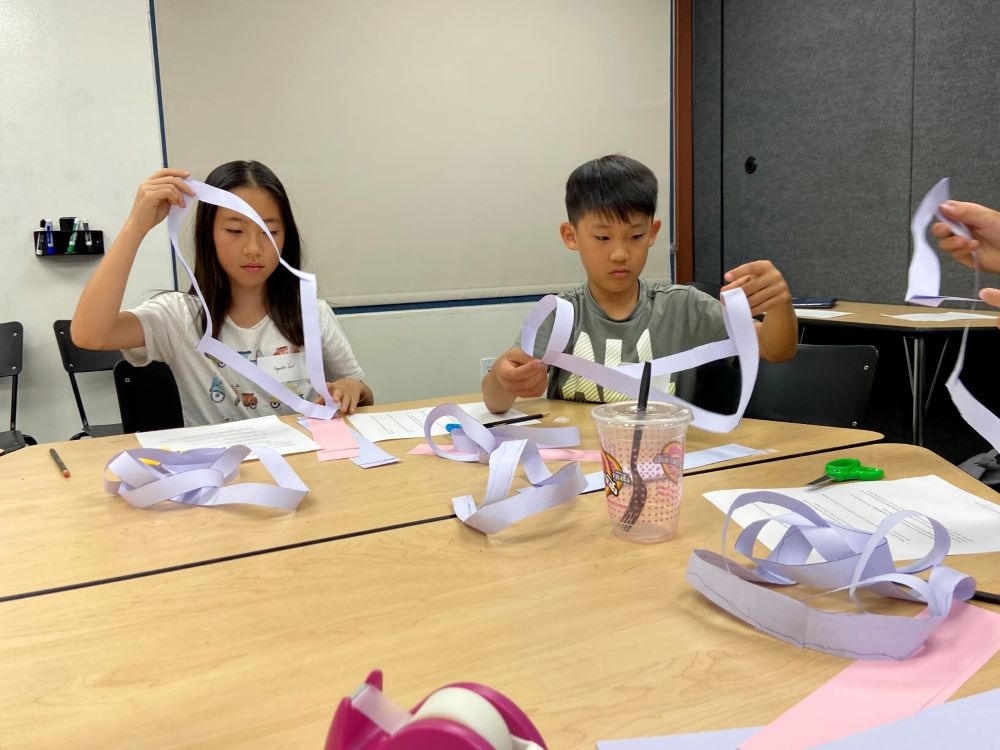
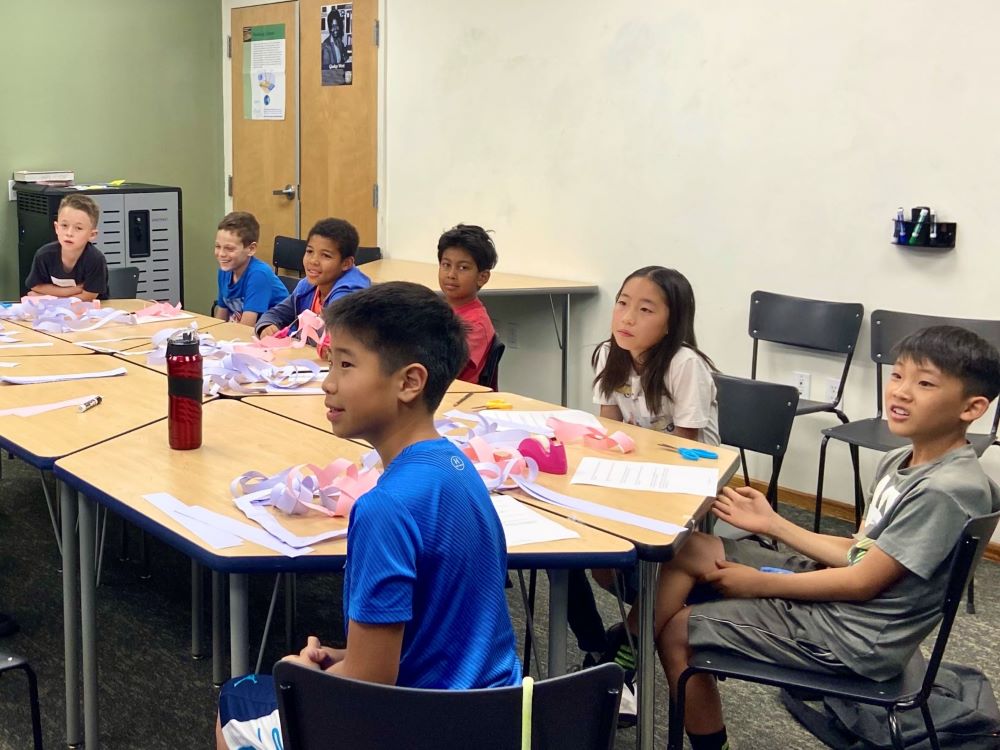
In the months leading up to the start date, I worked on developing an engaging curriculum that would introduce students to a new mathematical topic every week. I chose to highlight the topics that I had found most interesting, exciting, and unusual as an elementary school student, and ended up settling on 3D shapes, graph theory, Möbius strips, the Fibonacci sequence/the golden ratio, and hexaflexagons. I wanted to make my classes as discovery-oriented and hands-on as possible; my goal was to let the kids find patterns and make connections themselves to discover formulas and rules in math. I looked through some of my past Math Circle worksheets for inspiration, and met with Mike to discuss how to best cater the material I had in mind toward 3rd-5th graders.
In the first lesson, the kids went through the material much faster than I had thought they would. As a result, I modified my curriculum to cover each topic in more detail and spent many hours practicing and timing the lectures to make the best possible use of each hour that I had with the students. Unfortunately, I was only able to teach four out of the five lessons I had prepared because school closed the day before the last session due to the COVID-19 outbreak. However, I loved every minute of teaching the eight Overland students of my pilot program and wish the program didn’t have to end so abruptly.
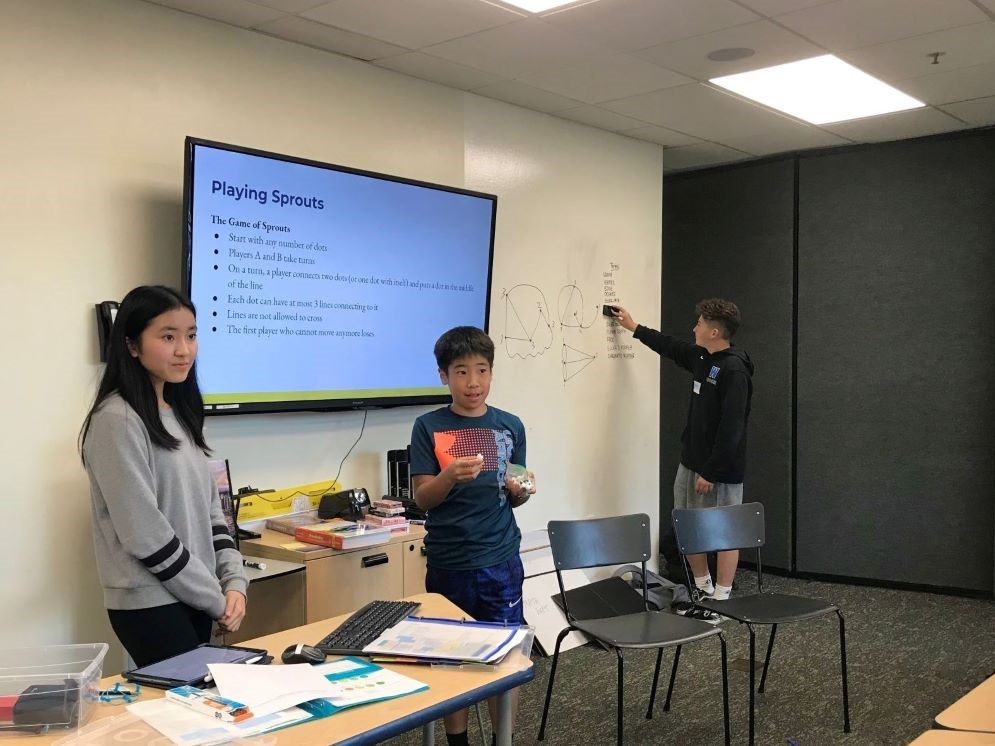
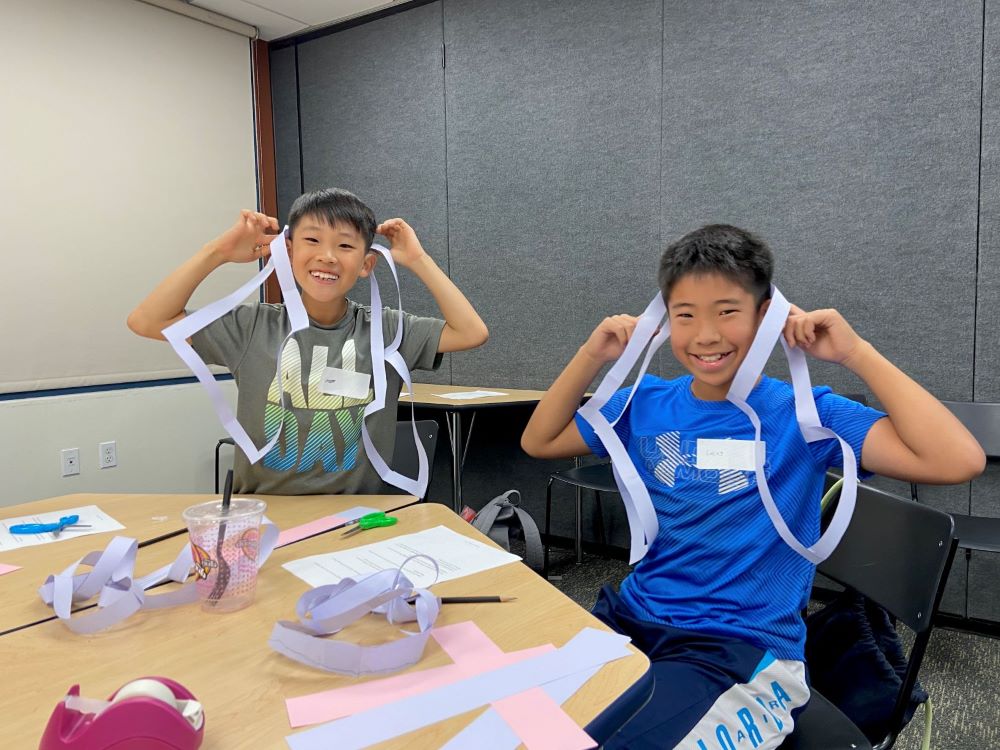
Future Steps
Next year, I plan to go further with Math Adventures by expanding the curriculum and working with other schools in my community. Eventually, I would love to extend this project beyond my community by building a Math Adventures website on which I can share my lesson plans and worksheets. By making my curriculum available online, I hope to provide an engaging virtual classroom experience for kids outside of the Los Angeles area.
Motives and Research
This year, I wanted to expand the Math Adventures curriculum that I developed last year and find additional meaningful ways to utilize the program to serve my community. To solidify my goals for the program, I conducted more research on the importance of math for young children and the attitudes that kids hold toward math. According to a 2020 survey paper about childhood mathematics and early learning, the development of math skills at a young age is extremely helpful for long-term progress in mathematical education. Furthermore, children learn math skills best when given opportunities to contribute their own ideas and arguments in the process. So, to support kids’ early math learning processes, I resolved to continue to cater Math Adventures to a young age group (3rd-5th grades) and to try to include as many discovery-based and idea-generating activities as possible while refining and expanding the curriculum. In addition, a 2018 survey conducted by TI Education Technology shows that contrary to popular belief, 46% of kids “love or really like” math. However, 75% of kids have heard adults “speak negatively” about the subject, and 44% have heard an adult say that they “hate math.” From these data, I concluded that it is extremely important to help kids maintain and grow their interest in math to keep them from forming a hatred toward the subject later in life. To help cultivate this interest, I strived to shape the Math Adventures curriculum around a variety of fun and engaging experiments and problems covering a wide range of cool math topics. Finally, since women have been historically outnumbered by men in STEM fields like math and the vast majority of students in my first two eight-week-long Math Adventures courses were boys, I decided to teach a Math Adventures for Girls course for my third series in the spring of 2021.
Process
On March 12, 2020, the day before the last session of the initial five-week Math Adventures pilot program, Windward’s campus closed due to the COVID-19 outbreak. Unable to finish teaching the course in person, I began to work on transforming the curriculum to a Zoom format. In addition to revamping the five lessons that I had already created, I devised three more lessons over the summer on the topics of infinity, number systems and parity bits, and tessellations and nets of shapes. I also created the website mathadventures.org, where I posted course materials such as worksheets, lists of class materials, related fun activities, and lecture slides for reference to make class materials easily accessible in a virtual classroom environment. I coded the website from scratch with HTML and CSS and was eager to use graphic design to create the Math Adventures logo as well as the format and color scheme of the website. During the summer, I felt a lingering sadness that I didn’t get to offer a sense of closure to my eight students from the spring, so offered to teach the four remaining lessons of the Math Adventures curriculum to the same group of students over Zoom in August of 2020. The four summer sessions were a success, and it was deeply gratifying to watch my students flex their hexaflexagons in awe on the final day of class!

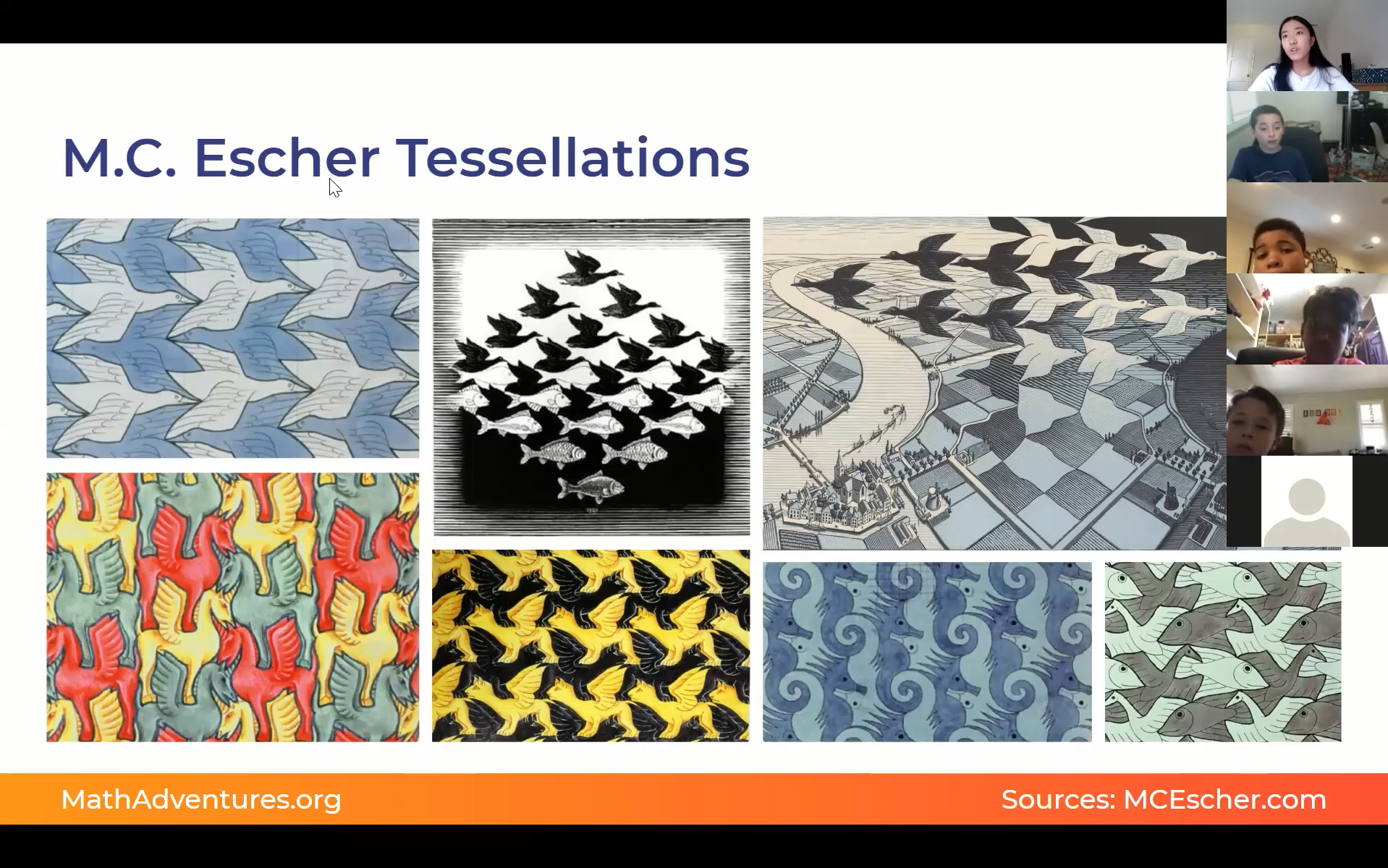
When school started in the fall, I began the process of organizing the first full eight-week-long Math Adventures course. Three of my peers at Windward graciously volunteered to help me out with the virtual classes as mentors. I once again worked with Ashley Goodman, the Director of Service Learning, to finalize the logistics of the course. We offered the class to 3rd-5th graders from Walgrove Elementary and Mar Vista Elementary on a first-come-first-serve basis.
A few days before each week’s lesson, I sent out an email to the students’ parents detailing the topic for the week and the materials needed for the lesson’s activities. I also prepared a lesson plan outline for the mentors’ reference that listed rough time stamps at which different activities would take place. Prior to each lesson, I met for about 20 minutes with the mentors to discuss the logistics of the lesson plan and review the course material. Then, at 3pm, we welcomed the students to the Zoom room!
After the fall semester of Math Adventures, I was excited to receive positive reviews from many of the parents. In the spring, I decided to offer a Math Adventures course specifically for girls, as girls were extremely underrepresented in both the spring 2020 course and the fall 2020 course and are also generally underrepresented in math as adults. I finished the course at the end of March.
Adapting to COVID-19
This year’s Math Adventures courses required several modifications as a result of the pandemic. First, since we had to teach the classes virtually, I could not distribute materials to the kids directly during each lesson. To make sure that everyone could fully participate in each activity, I assembled a Take-Home Kit for every student and then worked with Ashley to distribute them to the different schools. Each Take-Home Kit was sealed in a plastic bag to keep it COVID-19 safe and included a binder with the worksheets for all of the lessons, a pencil pouch with all of the relatively small materials needed for the course (toothpicks for polyhedron building, scissors, a glue stick, pencils, crayons, and a ruler), a pack of marshmallows for polyhedron building, and some rectangular strips of paper for Möbius strip making. In every week’s parent email, I reminded the parents to make sure their students brought the relevant materials from their Take-Home Kits to the next lesson.
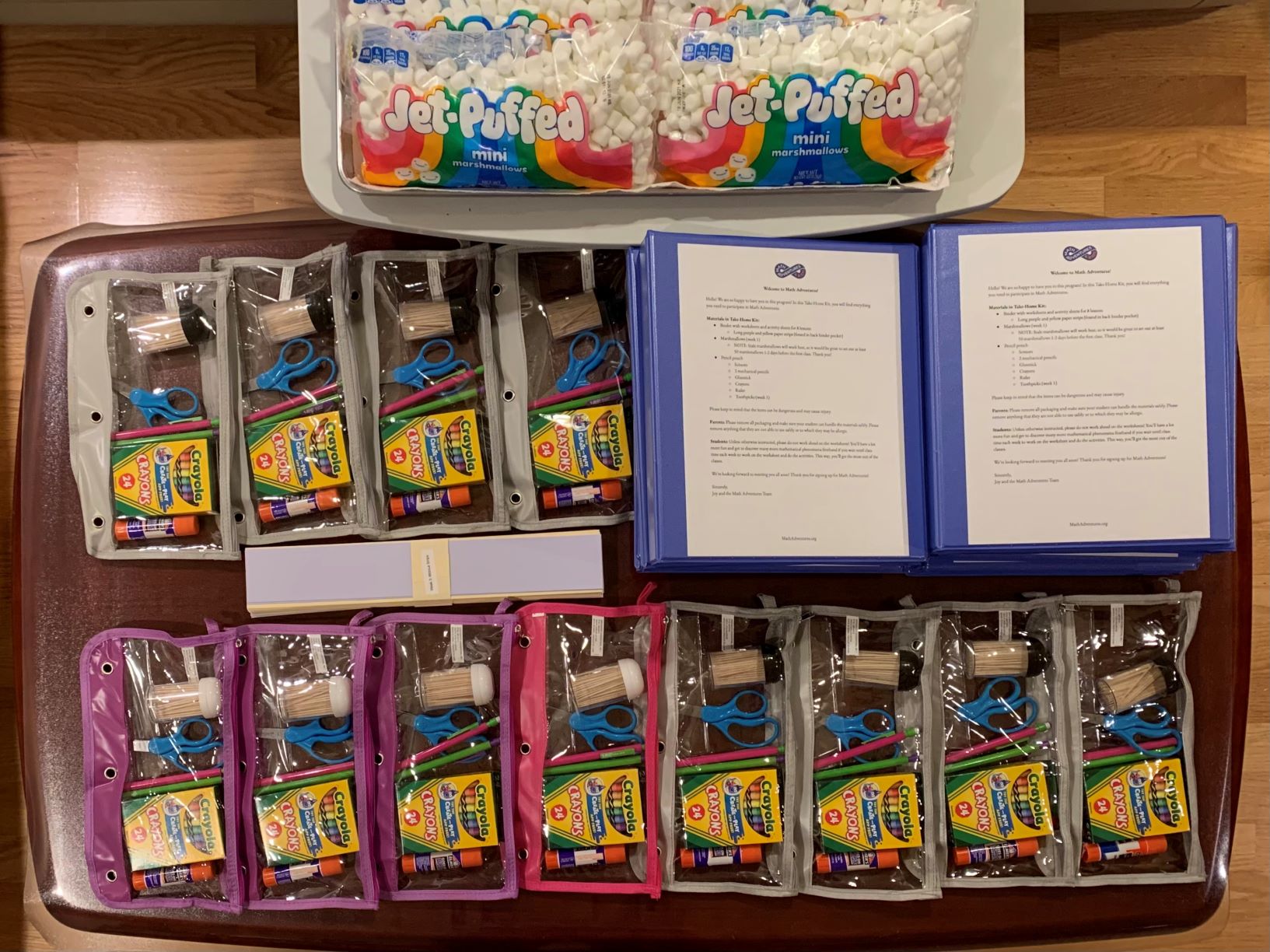
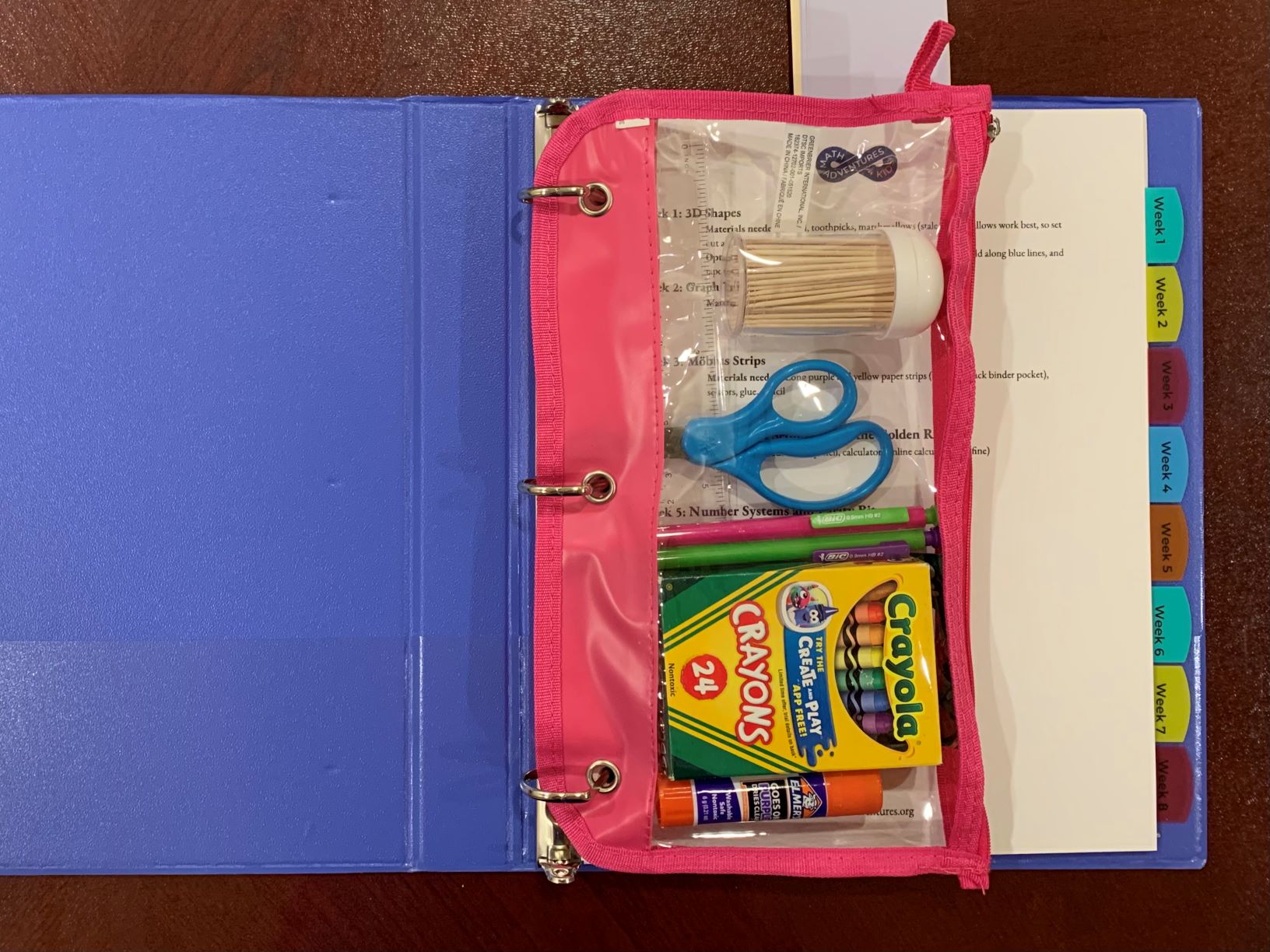
Another modification due to COVID-19 was the use of breakout rooms instead of in-person group work. In a given week’s mentor lesson plan outline, I noted whether each activity would be done as a group or in breakout rooms, the duration of the breakout rooms, and the number of breakout rooms per activity. Managing the breakout rooms posed a challenge logistically; I often felt that setting up and calling people back from the rooms took several minutes away from the fleeting hour that we had together. However, I think the breakout rooms did add some more depth to the virtual lessons by varying the classroom structure and the types of interactions between mentors and students.
A final pandemic-related adaptation was the format of the prize-based review session at the end of each lesson. In the spring of 2020 when we taught in person, the mentors and I tossed small prizes to the students when they answered review questions correctly at the end of class. However, since we couldn’t toss prizes to the kids virtually, we instead tallied up points earned for the correct answers they gave each class. On the last day of each eight-week course, the students voted on a charity or two that they felt passionate about, and I donated in the name of Math Adventures the number of points earned in dollars (usually about 100) to the charity. The charities and causes that we donated to over the past year are PetSmart Charities, Cookies for Cancer, For the Children, the LA Regional Food Bank, and Action Against Hunger.